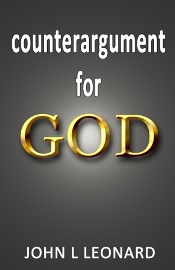 Life cannot evolve until it exists.
Life cannot evolve until it exists.
When I recently made that point during a series of questions I asked in another post, Dr. Benoit Leblanc responded by writing,
Your fourth question is the least contentious one, because it deals with matters that lie outside of evolutionary biology. “Until life exists, how can it evolve?”
http://columbuscameragroup.com//wp-content/plugins/wp-engine-module/wp-engine.php The answer is, of course, “it can’t”. Evolutionary theory is not concerned with abiogenesis, although its principles do apply to the evolution of increasingly-efficient unliving replicators (such as self-replicating nucleic acids) that may, in time, acquire characteristics that we associate with living creatures. Such is the power of the natural selection concept: in a population of replicators that can accumulate mutations, the replicators that gain a replicative advantage will, by definition, replicate better.
To his credit, Dr. Leblanc made the effort to respond, though he conceded my point while simultaneously suggesting he and his colleagues don’t care that the spontaneous origin of life was a wildly improbable anomaly, at best
With all due respect and while I’m sure Dr. Leblanc is considerably more knowledgeable about evolutionary biology than me, I cannot begin to fathom how he could possibly make the statement that evolution theorists could be completely unconcerned about the hypothesis called abiogenesis while simultaneously agreeing with Dr. Coyne’s assertion that evolution theory is true, beyond any question or reproach.
Quid est veritas?
What is the purpose of studying science?
Is it to cherry-pick from the evidence that helps you win an argument about whether or not God exists, or to gain better understanding of our world while seeking truth?
Frankly, if bullheadedly cherry-picking only evidence that fits a certain template were truly copacetic, it would be very easy for someone like me to simply be a Young Earth Creationist.
I could always choose to ignore the wealth of information obtained by radiometric dating ancient rocks and artifacts and observations made through careful examination of evidence in the fossil record.
But it would be utter denial to ignore that such evidence exists. If the objective of the exercise is to seek the truth in regard to our existential questions, there’s nothing to be gained by denying the fact that dinosaurs once ruled the earth, and it was almost certainly more than six thousand years ago.
The earth is probably a little more than 4.5 billion years ago; the universe is about 13.8 billion years old, assuming scientists can be trusted with their dating techniques.
On the other hand, if the only objective is to win an argument about evolution theory by any means necessary, then it does make sense to ignore the origin of life. It’s a difficult problem that complicates the exclusion of God in later-occurring diversification.
You don’t have to learn everything about chemistry to understand the problems of abiogenesis. You can simply ask the experts, like I have tried to do.
A biased stance against learning the real truth would be so transparently dishonest that it would bother me. The deliberate exclusion of pertinent information doesn’t seem to qualify as legitimate science. It’s nothing more than advocacy. But of what?
Atheism, apparently.
For any serious attempt to tackle the existential questions to succeed, one must have at least a superficial understanding about both the origin of matter and its initial animation.
Otherwise, you’re simply assuming that not one but two dramatic miracles occurred.
This universe was literally created from absolutely nothing.
Then six billion bits of information, the “source code” molecule we call DNA, spontaneously organized itself in the midst of total chaos and formed the first living organism, LUCA, an acronym for Last Universal Common Ancestor.
If supernatural intelligence played no role in our existence, LUCA evolved into all plants and animals, simply by means of isolated sexual reproduction, if given enough time for change to occur.
As a visual aid, the following expression was developed to assist the reader in gaining appreciation of the required scientific theories and hypotheses for the success of our Big Picture:
http://vintagegoodness.com/2015/04/12/ Life = Big Bang + abiogenesis + speciation + natural selection
The final two theories depicted in the Big Picture equation, are often referred to collectively as “evolution” theory.
My point is fairly simple and straightforward—to accept the purely secular, materialistic version of evolution presented by Coyne, Dawkins, and their ilk, one must begin by assuming the success of not just one, but two extraordinary miracles, with the mere possibility of the second miracle predicated on the success of the first.
This universe magically appeared out of absolute nothingness–an extraordinary concept to even attempt to convey. After all, one is tempted to substitute “thin air” for “absolute nothingness” but that would be grossly incorrect. Not even air existed, prior to the Big Bang.
From nothing came not only something, but this universe.
Then, and only after the successful origin of this particular universe with all the necessary ingredients “just right” for life, could inanimate matter become animated.
Life cannot evolve, until it exists. Period.
The Big Bang, abiogenesis, and evolution are all part of the Big Picture.

I responded on your other post when I had some time. I won’t have any time again until Monday morning, unless I get a chance during my layover tomorrow.
However you make the same fundamental errors in this list add you did the other, plus a few others which I will address when I get the chance.
However Dr. Leblanc’s response was absolutely spot on – as I explained in my other comment. Evolution does not need to know HOW life came to be in order to demonstrate that it does indeed evolve. There is no cherry picking here.
As I said in the other post, you don’t need to know anything about the egg in order to completely describe the chicken, even though the chicken MUST have come from the egg. That’s because we can look at the chicken! The same way we can look at life right now and we KNOW IT EXISTS and then describe how out came to be so diverse, demonstrate it came from a single common ancestor, and still never need to know how that first single common ancestor formed.